Table of Contents
This post may contain affiliate links to things like tours, hotels, Amazon associates and products. These help me earn a small commission at no additional charge to you.
I’ve always held off writing blog advice due to pesky feelings of imposter syndrome. That feeling of ‘but there are so many bloggers out there, why would anyone listen to my advice on how to start a travel blog?’.
Well, here’s to shaking off that feeling! Sometimes a few measurables can do you good. Hitting 50,000 monthly readers and qualifying for Mediavine ad network made me realise I must be doing something right.
Full disclosure – this post contains affiliate links for my web host company, Bluehost, which earn me a commission when you make a purchase, at no extra cost to you.
I wanted to put together this guide because, despite the stresses and hours I pour into my travel blog, I genuinely love it. My blog allows me to share my experiences with those who are interested, record my adventures and be the sole creative on a project that’s ‘mine’ and that I’m passionate about.
If I can help even a few other people take the plunge and enjoy travel blogging as much as I do, that’s a bonus!
Another reason I wanted to put together this guide on how to start a travel blog?
I made all the mistakes so you don’t have to.
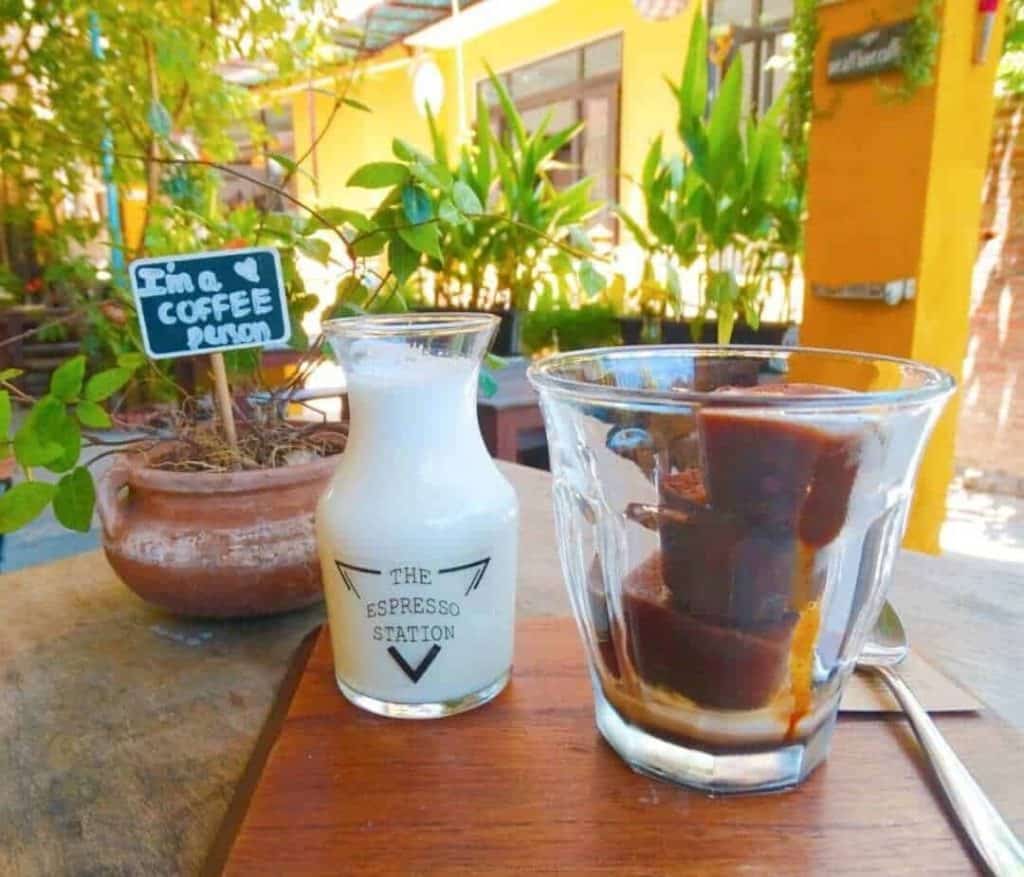
I started my travel blog back in 2015 as a travel diary but didn’t find my groove until 2017 when I was reunited with a computer, rather than the iPhone 5 that had been travelling around the world with me.
I wanted to share my travel adventures with others, especially fellow solo female travellers who might find my words helpful or encouraging.
It wasn’t until 2018 that I started thinking about my blog as a business.
If you Googled how to become a travel blogger with notions of fast cast and Insta fame, the reality may be disappointing. Blogging is a ridiculous amount of work and you’ll start out by spending money, not making it. (How much? Keep reading). Most of my favourite travel bloggers started out with a genuine love of travel and monetised their blog later down the line.
While I believe I started my blog for the right reasons, I could have started it better. I’m mainly talking about the things I didn’t do: the important areas I overlooked and should have worked on from the start. I could have got to this stage much quicker if I’d been smarter at the start.
So, how to create a travel blog? Let’s begin…
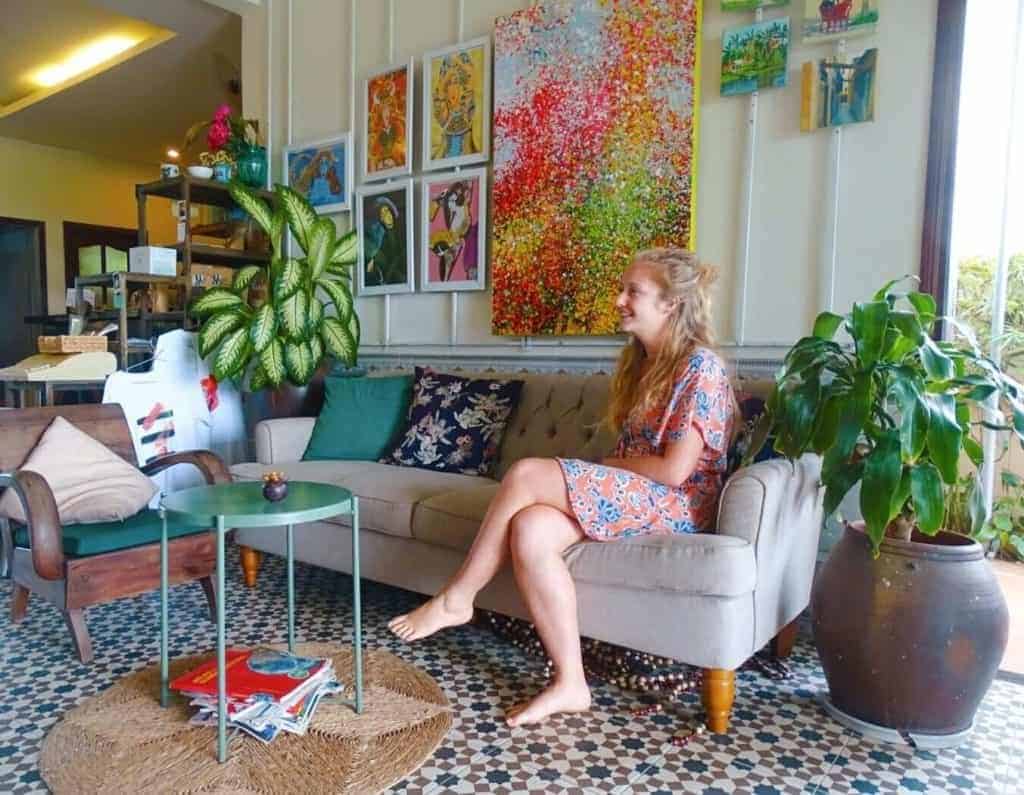
How to start a travel blog in 2024
In this guide, I’m going to share my step-by-step guide on how to make a travel blog. Most of what I’m going to tell you can be applied to other types of blogs such as lifestyle, parenting, finance and more, but I’ll be including some specific tips on how to become a travel blogger when you’re still working a 9-5.
When starting your travel blog, you’ll want to create social media channels. It’s important to think about your overriding brand and how you can keep it consistent across the platforms. Remember when starting a travel blog that you’re starting a brand, not just a website.
Related question – how did you teach yourself all this?
Honestly, I didn’t do anything specific, just put in years of time and effort. Many bloggers sell courses on how to become a travel blogger but I didn’t have the budget to pay for them starting out. I read a lot of articles, joined forums and used trial and error in writing my blog posts.
The first thing I would recommend when starting a travel blog is…
Define your travel blogging niche
Try to find a travel blog that has no niche apart from ‘travel blog’. Maybe these cut the mustard (um, what a fab expression) in 2009, but not these days. You can niche down to solo travel and thousands of people will have done it. Niche down further to solo female travel and hundreds of people have still done it…
I’m not saying you need a niche that no one has ever done before. But if you want to bring some fresh content to the blogosphere and find a space and audience for yourself, I suggest you think about…
The value you can bring
When I think about readers who have told me they like my blog, it’s never because I’m the best writer or photographer on Planet Internet and guess what? I don’t need to be.
When people reach out, it’s because they’re similar to me – perhaps they’re a solo female traveller or a backpacker navigating the world on a budget – and something I’ve said has resonated with them because I have experience on those topics.
That’s all niching really is. You don’t need to attract everyone on the internet, just the right people (please don’t make me say ‘find your tribe’!!!)
The first way to find your niche is to think about the value you can bring. What do you know more about than most people? Maybe it’s travelling with a toddler, maybe it’s cramming mini-breaks into your 25 days annual leave?
Don’t get imposter syndrome! There’s definitely something you know more about than others. Just make sure it’s something you have a genuine passion for otherwise it will feel forced.
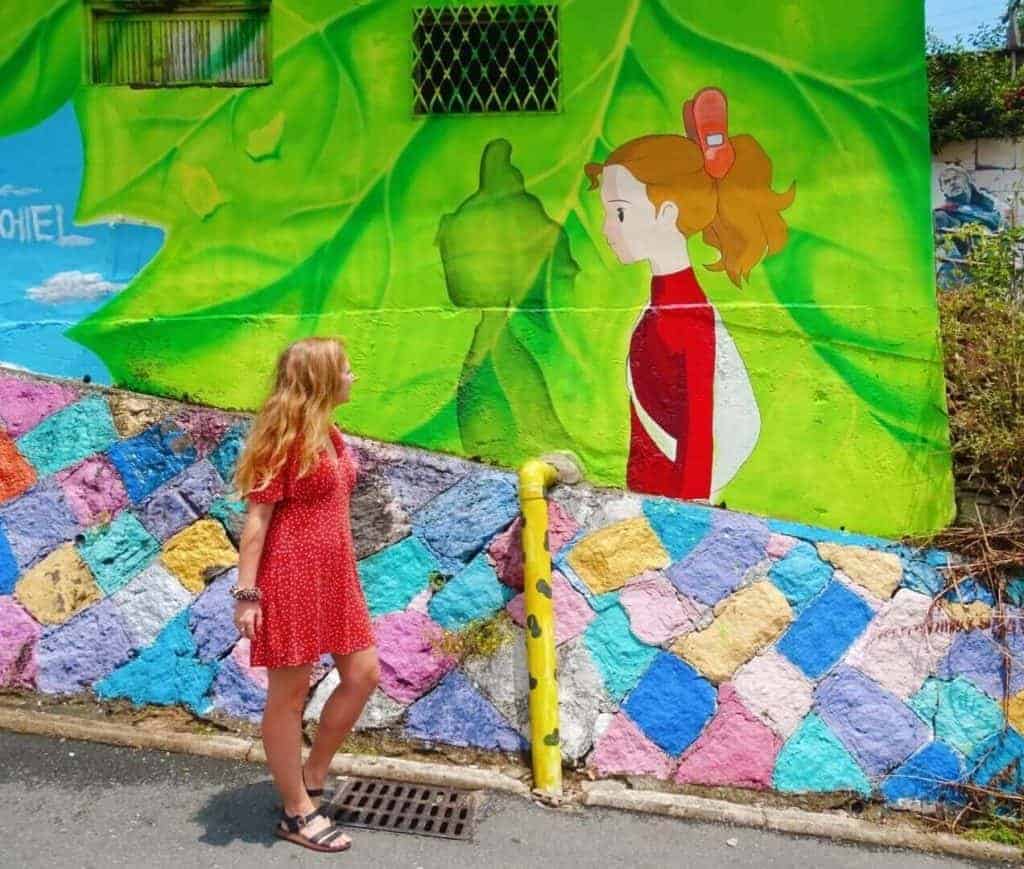
Travel blog niches
- Luxury travel
- Sustainable travel
- Adventure/outdoors travel
- LGBT+ travel
- Food travel
- Festival travel
- Travel with kids
- Couple travel
- Specific location travel (your favourite country, home country or city).
I’m sure there are plenty more, too. You could combine two to narrow down further, for example budget solo travel (hello!) or luxury sustainable travel.
If you’re struggling, turn your disadvantage on its head. When I started travelling as a freelancer, I had zilch money because who has money starting as a freelancer? I often had the frustrating feeling that I could be travelling better if I had a higher budget. I had to limit myself to living on $500 a month and subsequently, I had to find cheaper restaurants and forms of accommodation.
Turns out I was not the only person in the world travelling on a budget. By creating guides of budget tips based on specific destinations, I found not only a niche but an audience.
Can you have more than one niche?
Absolutely! You can have one main niche but a handful of sub-niches to create content around. For example, I will always be first and foremost a solo female traveller but I’m also a budget traveller, a foodie traveller and I’m now extending into the world of blogging about blogging.
There’s nothing wrong with having a few strings to your bow, but don’t overdo it. If you try to cover everything, you’re back to being a general travel blogger. I would say one main niche is ideal and up to 2-3 sub-niches if you can genuinely bring fresh and valuable content on those topics.
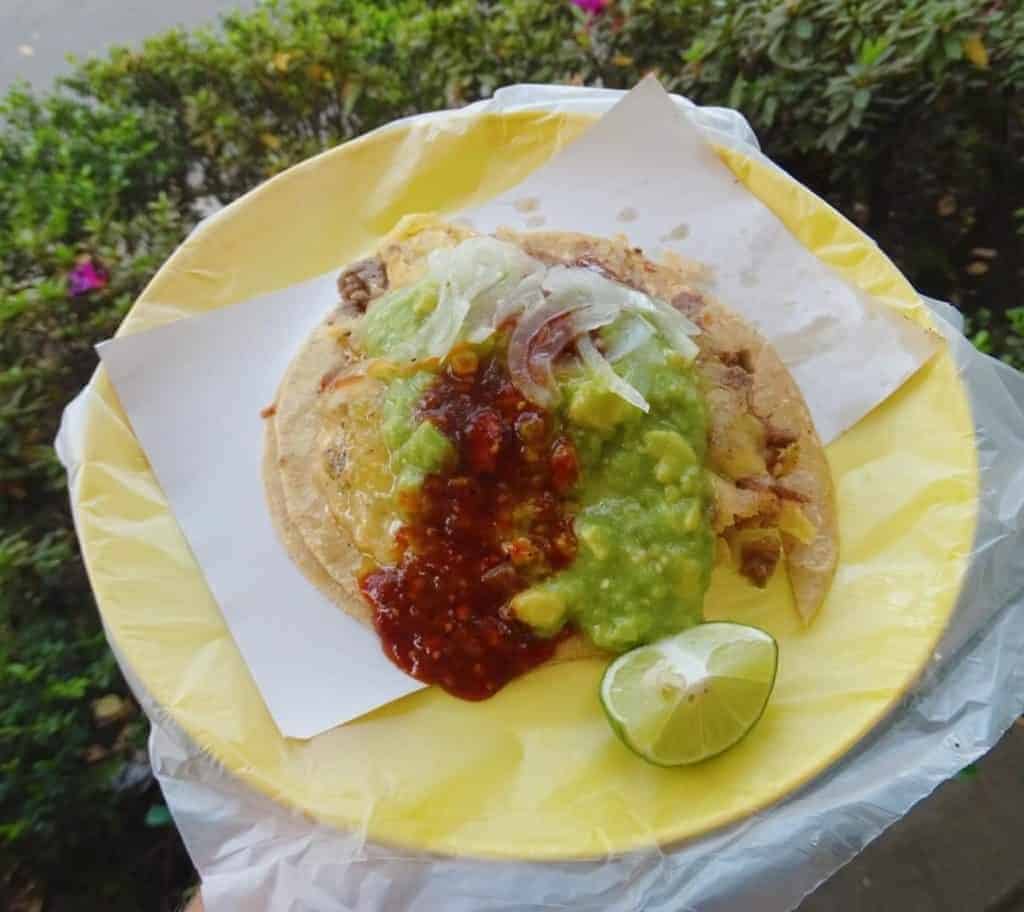
Related question – I don’t know my niche yet but I want to start my blog. Can I start and let my niche develop over time?
Your blog is ultimately going to grow with you over time and develop. I never considered writing about budget travel or sustainable travel but they grew into the blog as they became personal interests.
But with that said, I would really suggest picking your main niche as early on as possible. It will affect everything from picking your blog name to buying your domain and knowing what to write about.
Picking a travel blog name
Welcome to hell. (I’m sure this is the helpful intro you were hoping for). Why is picking a travel blog name so difficult?
I’m a testament to this as I first named my blog ‘Backpacks and Beaches’ which doesn’t tell you I’m a woman, a solo traveller or in fact anything. Then I agonised for ages over a new name. My tips for picking a travel blog name would be:
Be original. In the world of travel blogging, there are a lot of words that are used time and time again. Look up synonyms for commonly used travel words and see if there’s something more interesting you could use.
Note – never use the word ‘gipsy’ (or any other spelling of the word) as it’s nothing short of a racial slur.
How to become a travel blogger 101 – Don’t box yourself in. Make sure it can grow with you.
Try to avoid:
- Locations: Unless you know for a fact you’ll always be blogging about that place, I’d avoid ‘Adventures in Asia’ or somewhere that will restrict you from creating content about other regions at a later date.
- Ages: I’ve seen blogs with ‘twenty-something’ in the name rebrand after hitting the big 3-0.
- Specific travel styles: Something broad like ‘luxury’ is fine but names that mention hostels, for example, could be problematic later if you stop staying in them.
- Jobs: A friend recently changed her name from ‘The Bartender Abroad’ as she’s no longer a bartender. You get the idea!
Link it to your niche. This isn’t essential but I would recommend if possible using a name that gives something away. For example, the name of a person suggests you’re a solo traveller whereas ‘we’ suggests a couple travel blog and something like ‘The Adventure Journal’ hints at adventure travel.
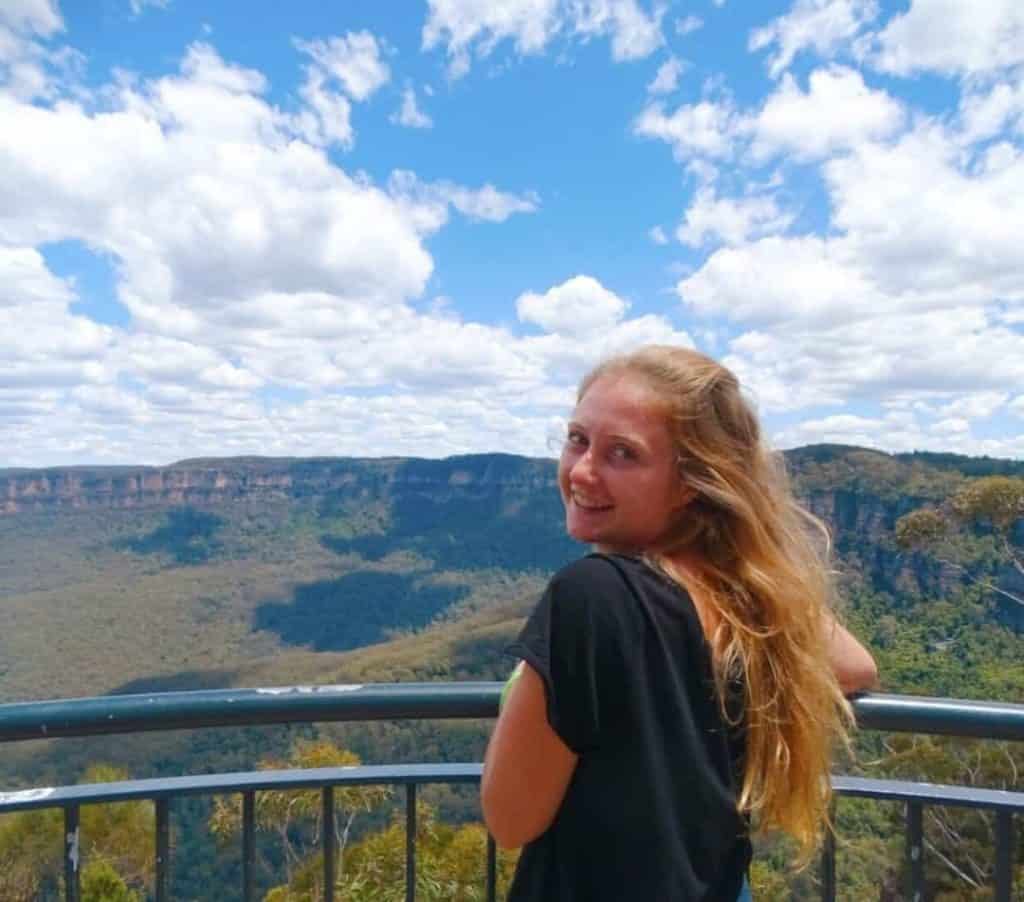
Travel blog name ideas:
- Descriptive nouns. Choose a word to describe yourself, for example traveller, backpacker or digital nomad and stick an adjective beforehand for example hungry, German or girl and ta-da, you have a name like ‘Hungry Traveller’, ‘German Backpacker’ or ‘Digital Nomad Girl’ which also describes your niche.
- Your actual name. I also like blogs including the writer’s name, for example, the best travel blog name everrrrr, Where Goes Rose?
Check the domains and social media handles
To check the domain is available, type into your browser www.(name).com and if you’re taken to an existing website, sorry pal, it’s gone. If it says the website doesn’t exist, you’re all good.
If it says ‘this domain is available for x’ this means some annoying company has bought the domain name in the hope that a newbie blogger like yourself wants it. You can see the fee listed and decide how badly you want it.
If it’s available and you want to snap it up, do so on GoDaddy.com. The other option is to wait until you set up your web hosting (which we’ll cover next) and get the domain name for free with Bluehost.
Check the social handles: It’s a pain when they’re taken. There are countless Instagram accounts just sat there not even being used. Your travel blog URL and social media handles don’t have to be the same but I personally think it’s best to be consistent. Also, potential followers can easily find you across platforms.
Does your travel blog have to be .com?
Well, no. But remember that ‘co.uk’ or the like may look familiar to you but could be confusing to people in other countries. I’d recommend getting a .com domain even if it means adapting your blog name slightly. I originally wanted ‘Where Rose Goes’ which was taken so I switched the last two words around to ensure the .com site was available.
Set up a blogging email address
This couldn’t be easier. You can just create a Gmail such as [email protected] but again, I would recommend checking it’s available beforehand.
Of course, it looks more professional to have something @ your domain rather than a Gmail. Once you’ve purchased your domain, you can create a custom domain in Gmail. If you have bought your domain on GoDaddy, there’s the option to buy the email address there.
Picking a travel blogging platform
Next, I’m going to talk about the technical side of how to create a travel blog. Since you can’t become a travel blogger without a website, you’ll want to pick what we call a content management system (CMS) in which you can create and publish your blog. The idea is that you can write and edit in the back end and once you press publish, the pages and blogs will post on your website.
There are a couple of options to choose from but I use…
WordPress
WordPress is the oldest and still the biggest blogging platform. Most bloggers use it so it’s easier to find advice when you need it. You can use plugins (more on these later) that provide endless worlds of functionality that their rivals don’t.
On the downside, the plugins and odd bit of coding can be tricky at first but just play around; you’ll soon get the hang of it.
Important note – if you are using WordPress, you need to set up hosting separately. More about this next.
WordPress.com vs. WordPress.org: This stumped me at first. Wordpress.com is a free and very basic version of WordPress that can be good for beginners to play with. However, if you’re serious about starting a travel blog, you will want to upgrade quickly to Wordpress.org which is what most bloggers use for design and functionality.
Squarespace
I’ve enjoyed using Squarespace in the past because it’s more customisable and better for design. You can drag and drop to give it to feel you want which is great if you’re a creative person. However it can be fiddly at first; I recommend saving constantly in case you move something which messes up the whole page.
Wix
This is a popular CMS I’ve not used but I would be curious to try since it always comes out well in blogging CMS comparisons. Users say Wix is super easy to use and very aesthetically friendly plus there’s customer support. The only downside is that you can’t change your theme (aka your design and look) at a later date.
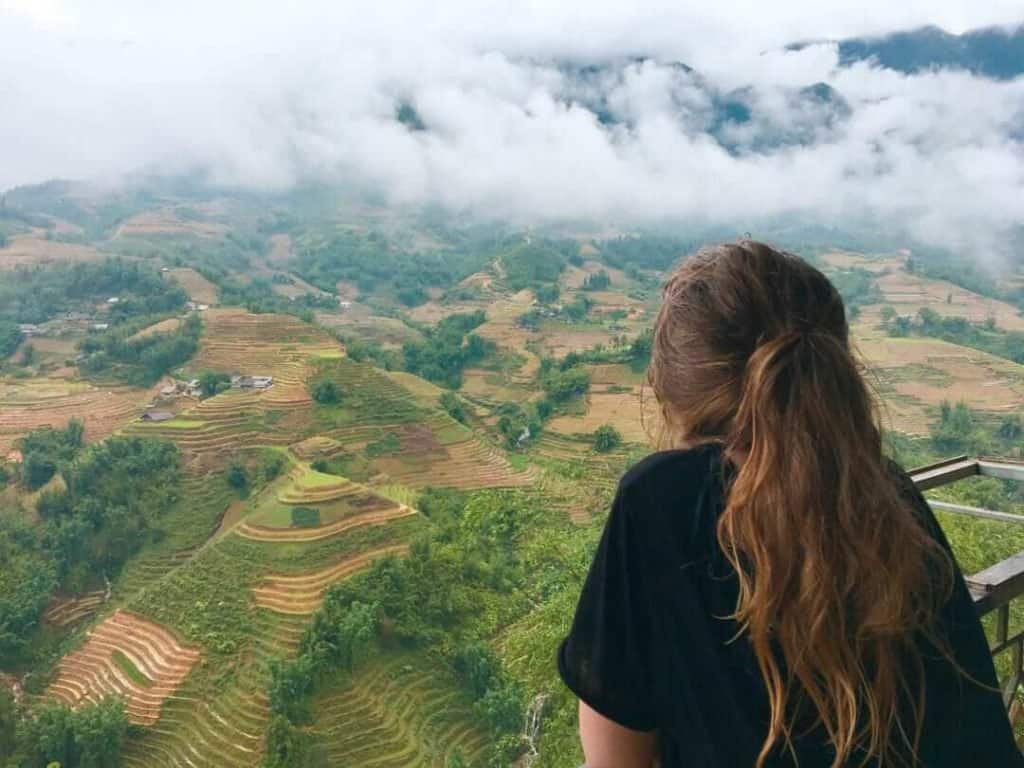
Picking a hosting company
Unless you’re using a CMS that includes hosting, you will need to sign up with a host when making a travel blog. I’ve never really understood much about the world of hosting but luckily you don’t need to. Hosting companies create a space for your blog on the web.
Bluehost
In 2017, I created my travel blog with Bluehost who have a useful live customer chat feature where you can get help right away.
Usually hosting is $7.99 a month but because I’m already a customer and affiliate I can offer you hosting for just $3.95 / £3.02 a month. Click the button below to get started or click here to get your discount and begin.

Note – this rate is for the first three years and is billed upfront in one go. For the following three years, the rate is higher.
Once you’ve followed the link above, click ‘Get Started’. I’ll run you through the next steps. Choosing your plan is the first step.
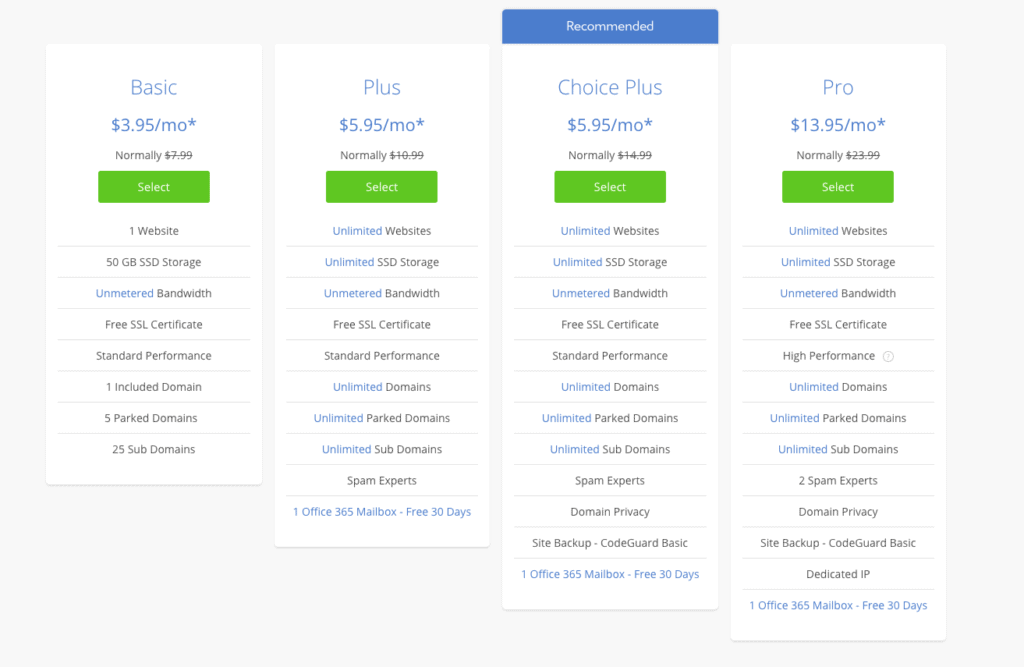
If you’re just starting a travel blog, the Basic package will do. You can always upgrade later.
Next, it will ask you to set up your domain. You can click to do it later at the bottom if you’re still umming and ahhing. If you’re ready to purchase it, you can just type the username you want, for example ‘wheregoesrose’ into the box. Presumably, by this point you have already checked it’s available.
If you already purchased it on GoDaddy, simply enter the domain into the box on the right.
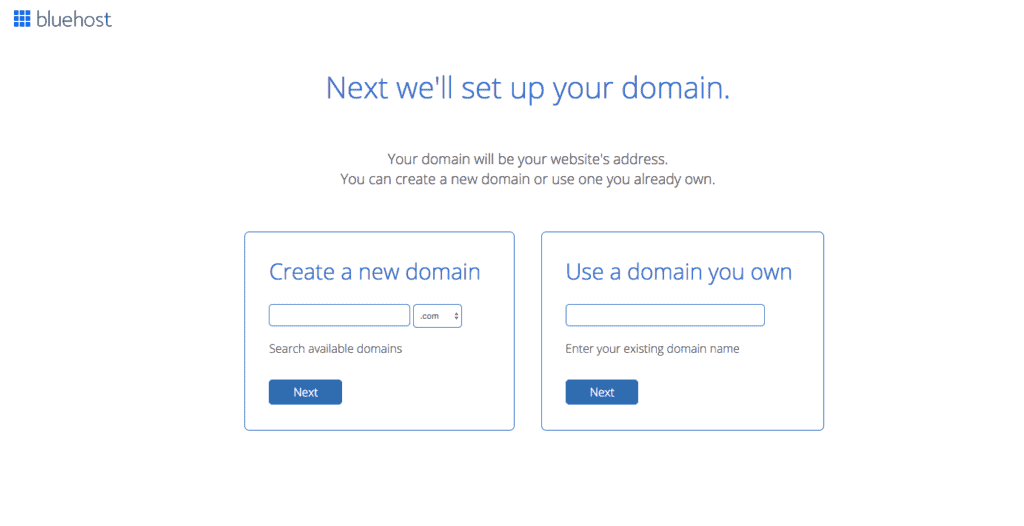
It will tell you ‘success’ on the next screen and ask you to make a purchase. Here you are not only buying the domain but the hosting service for the next 36 months.
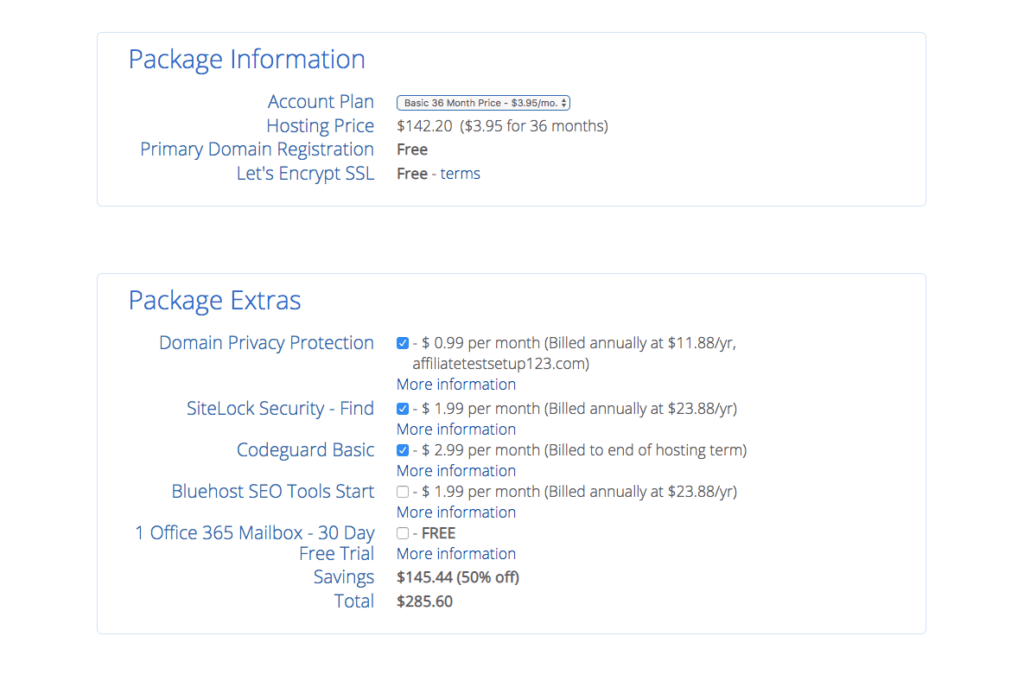
As you can see, there’s the option to purchase extras. I did the classic thing of being baffled by tech and purchasing their recommended ones (automatically ticked in blue) but the only one really need is privacy protection for 76p a month. Now all you need to do is enter your payment details and you’re good to go.
Linking up WordPress and Bluehost
Once you’ve created your Wordpress.org website, you simply need to log in via Bluehost. In the Bluehost portal, you will be asked your WordPress login details and ta-da – your newly-created travel blog is all linked up!
Log in to WordPress
Since you create content in WordPress not Bluehost, the next step is logging into your new WordPress website. Head to https://yourdomainname.com/ wp-admin and enter your username and password.
Now you can play around on the dashboard and see how everything works. Down the left-hand side you will see ‘posts’ where you create articles, ‘pages’ where you can create ‘About Me’ pages and the like, ‘appearance’ where you can customise the look of your site, and loads more. Honestly, it took me ages to get comfortable using WordPress but just keep playing around.
Picking a Wordpress theme
When making a travel blog, you will want to think about the aesthetics of your site. A theme is like a skin for your travel blog. Different themes have different looks and functionality, although you can usually edit things like fonts and colours.
WordPress displays a few themes which you can browse but these are fairly basic. I bought my first theme from Theme Forest for $50. There are loads to choose from. Once you’ve bought it, there are no future costs.
As of 2024, I’ve changed to Flatsome which I can recommend as a fantastic, fast theme with drag-and-drop page builders.
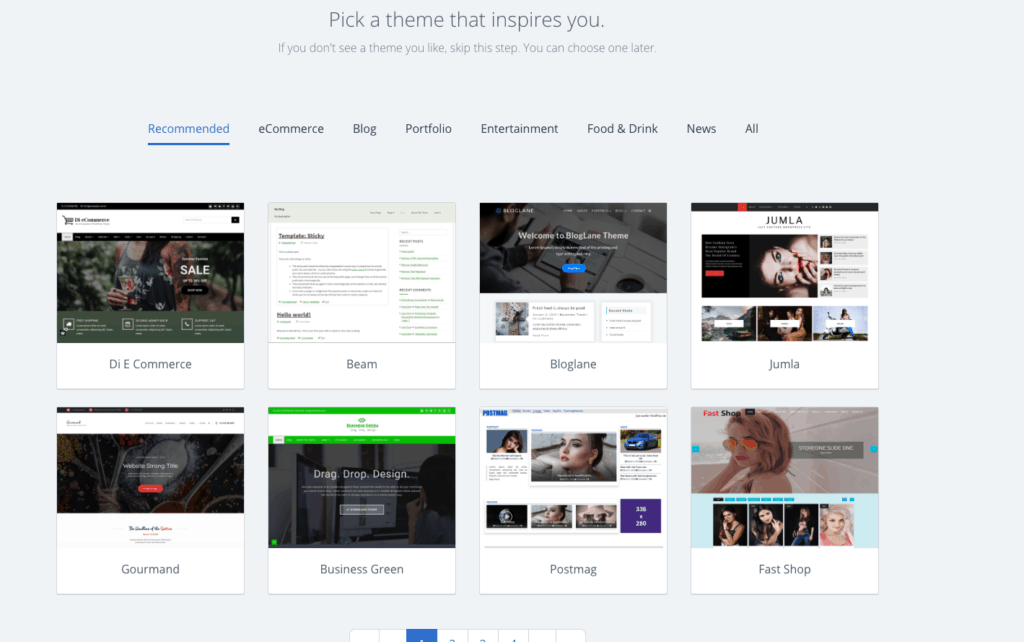
Divi page builder: I’ve also heard good things about Divi which is a page-building theme that you can purchase from Elegant Themes. This costs $89 per year but allows you to design a much prettier website with front end drag-and-drop features.
Follow the instructions that come with your purchased theme to apply it to your WordPress website. From memory, mine came as a compressed file which I uploaded inside WordPress. Next, you can play around and customise it. I didn’t love the fonts that came with mine so I downloaded the Google Easy Fonts plugin to change them.
Plugins for Wordpress
Even if you pick a lovely theme and customise it, your travel blog won’t have much functionality without plugins. These are pieces of software that add functionality to your website.
These can be anything from adding clickable maps to your blog posts, displaying your Instagram feed in your sidebar and a million other things. There are even plugins to protect your website from spammy comments and hacks.
Tip – too many plugins can slow down your website so be picky. Some of the most useful when creating a travel blog include:
Google Maps: This lets you pull pinnable Google Maps into your blog posts and show routes and locations within a city or country.
Sassy Social Share: This adds ‘share it’ buttons so your readers can easily share your blog posts to social media channels like Twitter and Facebook.
WP Forms: This lets you insert contact forms so people can send you messages. This is great if you plan to work with brands later on.
Yoast: This is a plugin to help with your Search Engine Optimisation (SEO), something we’ll discuss later.
Click ‘Plugins’ on the left-hand side of your WordPress dashboard. Click ‘add new’ and search for ones you want, then click ‘activate’. Go to the ‘settings’ section of individual plugins to set up the details.
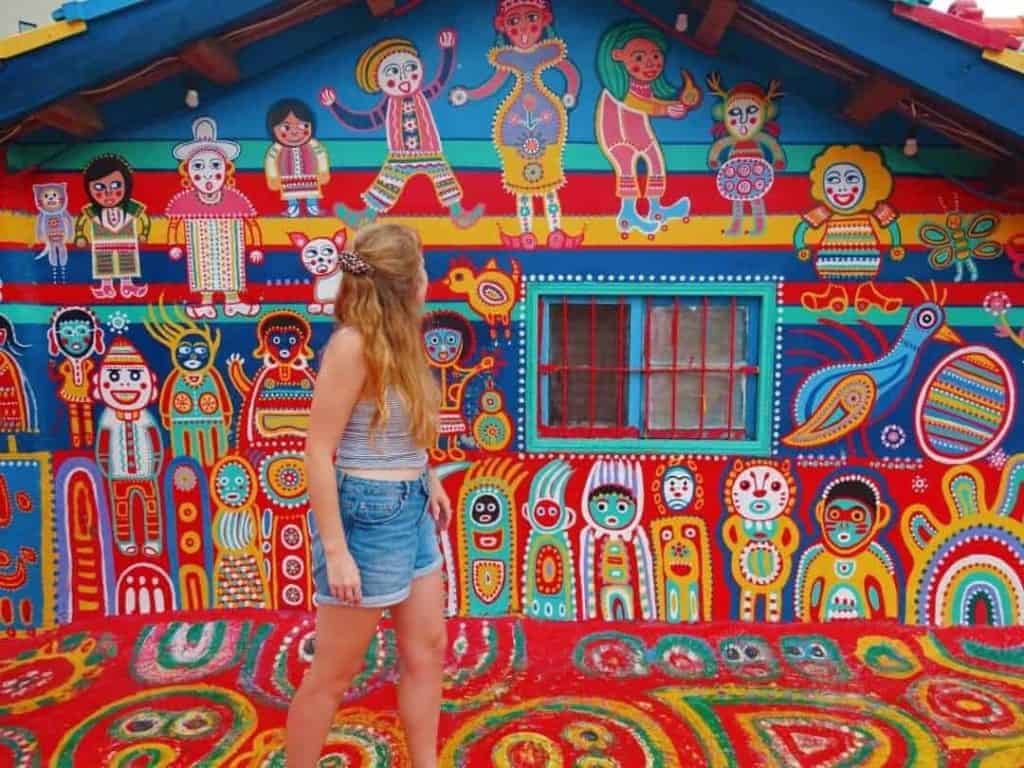
Design your logo
When starting a travel blog, don’t forget to make a logo. Once you have it, you can display it in future content such as email footers, newsletters, media kits, business cards… If these sound overwhelming don’t worry, you don’t need them all right away. Start by just uploading it to the top of your homepage.
How to make a logo when starting a travel blog
Canva – If you have zero graphic design skills, don’t stress. I recommend using Canva which has loads of tools and drag-and-drop design elements. You can make something simple and effective without experience. You can always make a basic logo for now and change it later; just remember to update it everywhere.
Fiverr/Upwork – hire a designer for a more professional look. Be sure to view the designer’s past work and reviews first. I had a bad experience when I paid someone $10 to make me a logo that came out looking like something from 90s clipart. People did say ‘What did you expect for $10?’ but who wants to throw money away?
Creating travel content
This is the fun bit when becoming a travel blogger. It’s also the bit that stumped me initially. What should I write about? If you’ve defined your niche well, this should be a bit easier.
It’s ideal to create travel blog content around your niche early on. If you’re a sustainable travel blogger, why not write about the best destinations around the world for sustainable travel? If you’re a budget traveller, write about tips and hacks for travelling on the cheap.
Creating some big guides on your chosen key areas is known as ‘cornerstone content’ and is ideal when it comes to telling Google what you’re an expert at, thus helping with your rankings.
Content ideas for creating a travel blog
- Destination guides: for these I usually include headings such as where to stay, things to do, where to eat and how to get there. Basically everything you’d need to know if planning a trip to a new place.
- Personal essays: is there something you feel passionate about? I’ve written before about why everyone should solo travel at least once, the effects of technology on travel, and why volunteering can do more harm than good.
- How-to guides: maybe there’s something you’re especially skilled at like packing for a trip or finding cheap flights.
- Packing lists: personally I find these super boring to write but I know lots of bloggers enjoy reviewing products and helping readers with outfit inspo related to their next location.

Related question – ‘Do I need writing experience to start a travel blog?’
Of course it helps. Unsurprisingly, many bloggers are those who love writing or have a natural flair for it. Many copywriters and journalists move into blogging as they want their own platform. In terms of writing quality, there’s strong competition out there.
However there are plenty of successful blogs where, to be honest, the writing isn’t amazing it still works. It depends on your purpose. Some readers want information at their fingertips without an eloquent story first. If the purpose of your blog is to provide information, you don’t need to be a trained writer.
For SEO (we’ll get to this, promise), you do need to write detailed and well-researched articles. But you don’t need to be Charles Dickens.
To keep your followers and regular readers coming back, you’ll ideally be good at storytelling. So yes, writing skills always help!
For me, the best blogs deliver valuable information while also making it fun and enjoyable to read, throwing in a few tales and personal views along the way. This balance can take ages to strike so don’t stress; just practise!
Tips for well-written travel blog articles
All that said, no one would aim for a badly-written blog, would they? If you’re starting with no writing experience, here are my tips.
Define your purpose and tone
You’ll soon find your voice. While this will likely be consistent across your posts, it’s worth noting that different blog posts can have different purposes.
For example, I often write informative itinerary posts which are light on personal details. Then, I’ll write opinion pieces, like my two year digital nomad round-up which are more like personal essays. It’s okay to include both as long as you…
Write great headings
If your guide is purely informative, make sure the heading matches it with phrases like ‘how to’ or ‘where to find’. If it’s a personal essay, use ‘I’ or ‘me’ or personal development terms like ‘learnt’.
Use emotive words like ‘complete guide’ or ‘ultimate itinerary’ but avoid ‘clickbait’ (sensational or overly dramatic headings), to entice users to click. These are considered bad practice.
Break up text blocks with headings
For the love of God!
When I read back my old blog posts, I’m frustrated to find incredibly long essays with no headings. The average internet reader has an attention span of 4 seconds (I made that up but you get my drift) so unless there are clear headings and photos dividing up the text every few blocks, they will switch off, however engaging your writing is.
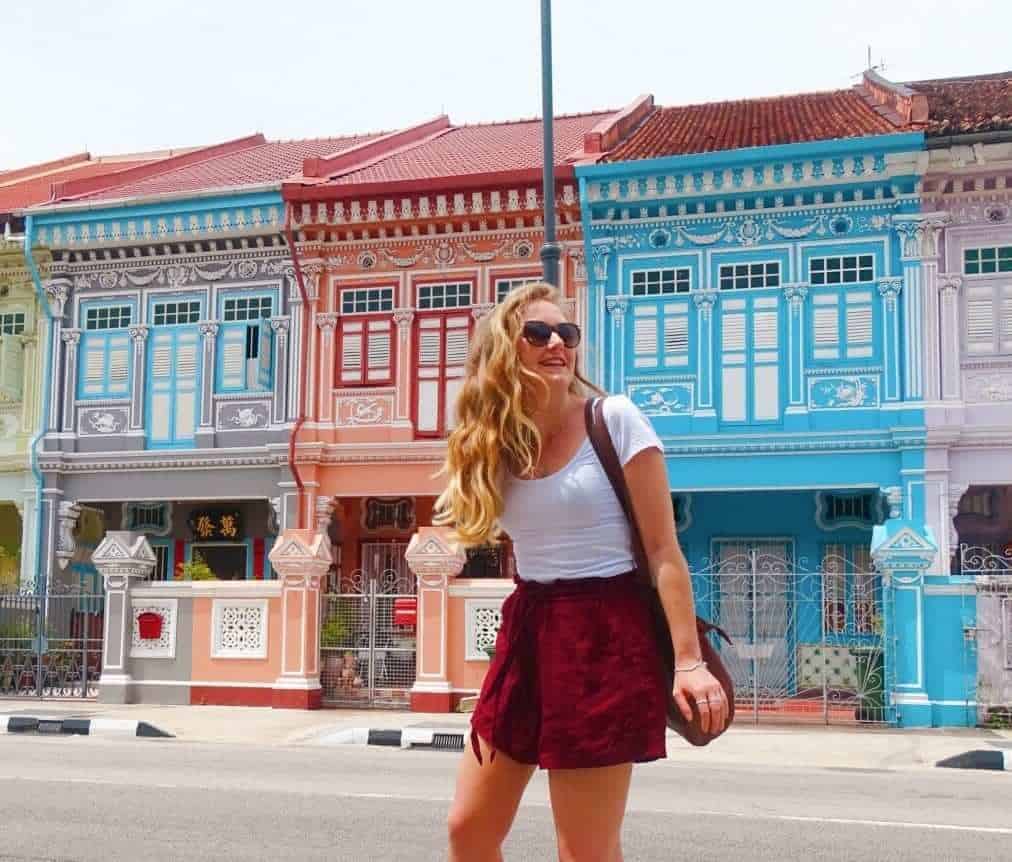
Read, read, read
Don’t start a travel blog in the dark. Make it your business to read as many other travel blogs as possible. Never steal ideas or copy blogs but do take note of things you like and dislike whether it’s tone of voice, humour or techniques used to make you feel emotion.
Ask yourself ‘how do I feel after reading this?’ then go back and work out what they’ve done to make you feel that way.
Tell a story
Remind yourself you’re not Lonely Planet and you don’t need to be! Be real. If solo travel was getting you down and you were feeling lonely or having a bad day, tell it, sister. I guarantee your readers will relate more than if you half-heartedly play the ‘I feel so empowered’ card.
When telling a story, aim to place your readers there. Tell them not just how you felt but the elements that got you there: the smells, tastes and sights. Make your readers feel like they’re with you.
Tips for editing and accuracy when creating a travel blog
This is many bloggers’ least favourite thing. It can be tough if you don’t have an editorial background. The one thing I always do is take my right cursor and run it through my article slowly, reading each word and letter. Come back to an article a few days after writing because it’s easier to spot errors.
The most useful (and only) tool I use for proofreading is Grammarly. You can paste text into the website and it will underline any errors and offer edit suggestions. You can also download it to your computer so it will show in all windows, even WordPress. It’s so useful and free, although there’s a pro version which might be helpful if you know you need extra help in this area.
Useful pages when starting a travel blog
About me page: Write an intro to your website and tell readers who you are. Share personal details and your travel story. Make it natural and chatty by telling people about your passions and travel style, which hopefully will link back to your niche.
Optional – work with me: If you’re jumping straight on the hussle for sponsors and brand collabs, you can include a page mentioning your stats, audience demographics and past collabs. Personally, I’d leave this page until later as you probably won’t be working with brands on day one.
Menus: Not a page as much but a way to organise your content. You want your readers to be able to browse and find related articles easily. I would suggest a menu with several dropdowns, for example ‘destinations’ where readers can click on the different countries or cities.
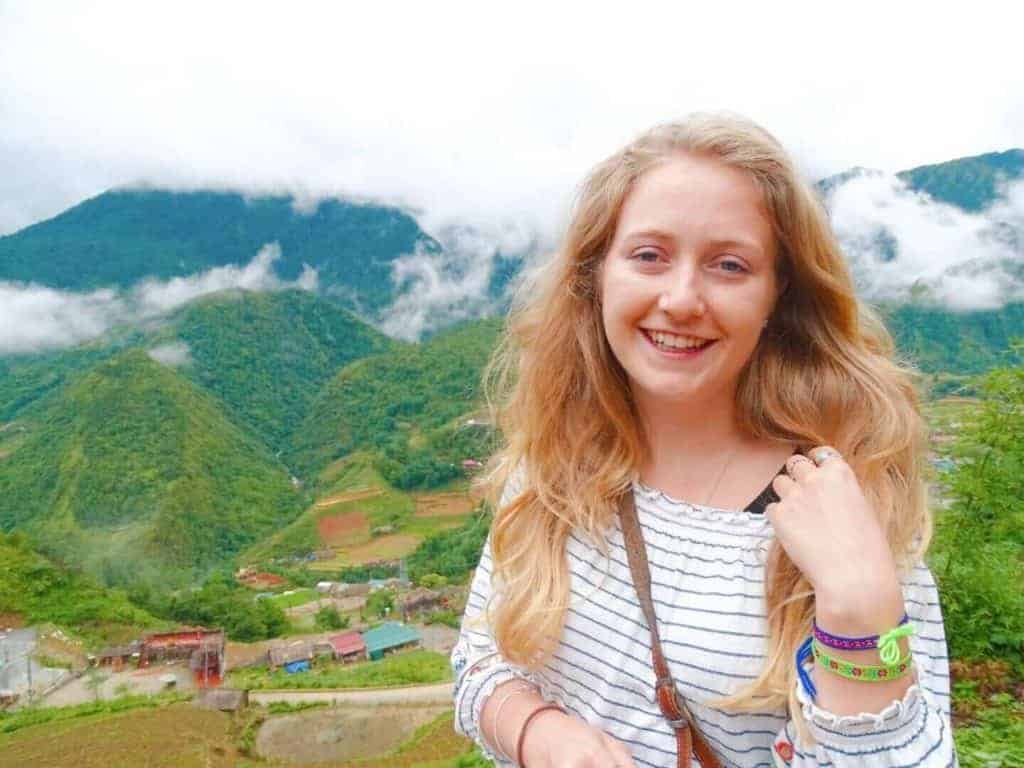
How to bring traffic to your travel blog
So, you’ve figured out how to create a travel blog and written your first article? Now how are you going to get your readers?
Traffic is important because a certain number of monthly readers will attract advertisers and make you money. More readers also convert to more newsletter subscribers and social followers. But where does this mysterious traffic come from?
Read next: how I doubled my blog traffic in 4 months
Google is the world’s most popular search engine and the one you want to ‘talk to’ in order to attract traffic. Around 90% of my traffic comes from Google.
Basically, the higher you can rank on page 1 of Google, the better. When you start blogging, you’ll unlikely rank for a number of reasons, one purely being that Google favours established domains. Don’t give up; old blog posts can jump up over time so even if your article is on page 10, that’s not to say it won’t reach page 1 later.
Google are a little mysterious and have never explicitly said what they look for in a blog post and why some posts make page 1 and others don’t. However, many internet search experts have come up with some solid theories that you can follow in order to enhance your blog posts.
How to get Google traffic: SEO
Search Engine Optimization is a huge industry that essentially makes your website findable via search engines. I would attribute 90% of my traffic and monetary earnings to my learnings and efforts in SEO.
Since this is a guide to starting a travel blog, I don’t want to go delve deep in this one particular area. For now, I’m going to direct you to this ultimate SEO guide and share a few beginners tips here. These are:
SEO tip #1: Keywords are your friend. As an exercise, Google something like ‘best brunch in Oxford’ and click on any of the top articles (but preferably mine, thanks!). Do a text search for ‘brunch in Oxford’ in the document and you can expect to see it several times. This is what we call a keyword or in this case, a keyphrase.
It’s the idea that when a user searches for a word or phrase, they’ll find the articles that best answer their question and meet their needs. You need to use such keywords to tell Google that your article is that answer.
SEO tip #2: Get KeySearch – this helps you find out what people are searching for. It’s useful because otherwise you could end up writing articles that no one on the internet is actually looking for. I pay $17 a month for this service and it’s genuinely the one thing I couldn’t live without (apart from matcha bubble tea, obviously). Note – there’s a pro option but I use the starter pack.
SEO tip #3: Write the best answer that answers all parts of the user’s question. This may sound a little vague but it works. Focus on long articles that go in-depth and have an edge over your competitors.
Pinterest is unique because it’s somewhere between a search engine and a social media channel. You can build followers, but you can also search for specific topics and find articles like you would on Google.
If you’re wondering how to start a travel blog and get traffic quickly, Pinterest is a gem. Not only can you generate clicks to your website right away (unlike via Google), but it doesn’t assess your articles. If you’re still building up your SEO skills, you can still get Pinterest traffic.
How to get Pinterest traffic: design and strategy
Now you know about keywords, I’ll let you know they apply to Pinterest, too. This may be a little advanced for starting your travel blog, but I highly recommend the Pinterest with Ell course on Teachable.
Pinterest is all about aesthetics so you should create eye-catching graphics with Photoshop or Canva. I use the free version of Canva which is excellent. You can create professional-looking graphics with no design skills.
2022 update – Pinterest is a bit glitchy at the moment as their platform shifts towards story pins and shopping. I prefer to focus my efforts on Google but I’ll update this if things change.
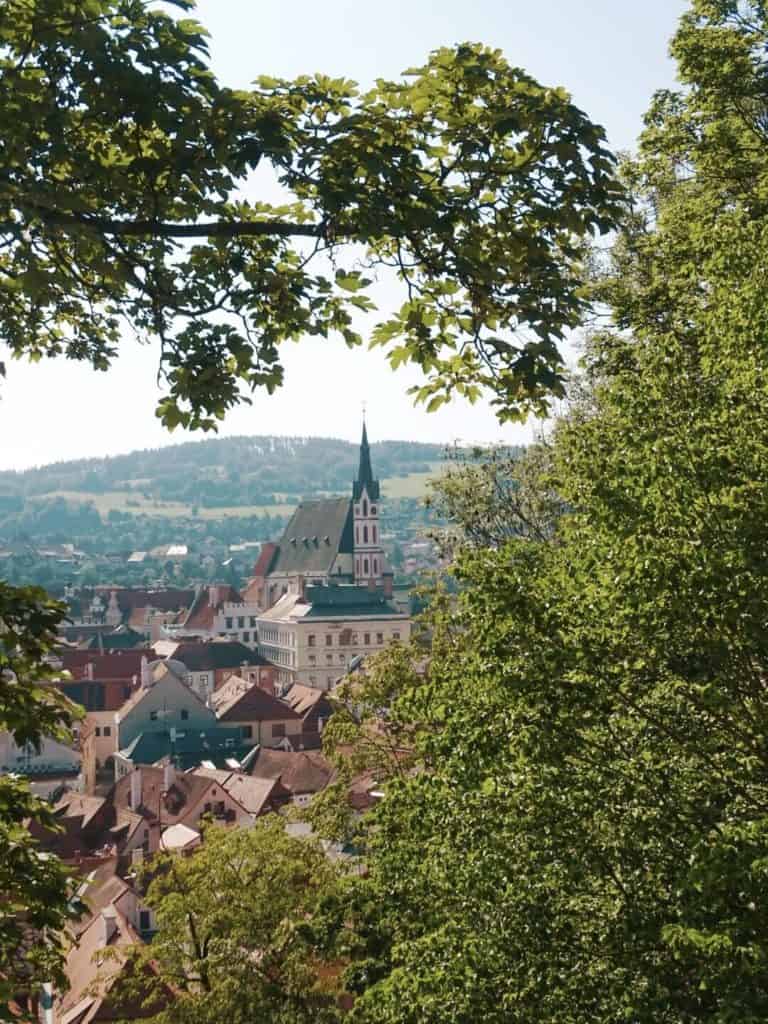
Social media
Social media brings me the least amount of readers compared to Google and Pinterest. If you have a million followers or better yet, followers really engaged in your niche, it can be good but Google and Pinterest always trump it.
If you have more than 10k Instagram followers and can access the swipe up feature, it brings a lot more traffic.
How to get it: followers
While Google and Pinterest both bring new people directly to your website, Instagram tools like hashtags and the Explore feed only attract new users to your Instagram profile. That’s why I say that you need a lot of existing engaged followers to attract website traffic from Instagram.
For that reason, I don’t have any specific ‘tips’ for using Instagram to drive traffic for your blog. All I can suggest is building an engaged Instagram following and focus on reaching 10k.
Related question – how long should blog posts be?
I don’t want to say ‘as long as possible’ because I don’t want to encourage waffling for the sake of it. But as long as you are answering the reader’s question throughout, it’s optimum to create blogs that are as detailed as possible.
I usually aim for 3,000 words for a city guide or 2,000 words for a specific attraction like a walk or market. I find these do really well compared to shorter blogs I wrote in the past of 1,000 words or less.
Related question – how often to post?
This is a grey area. Sources suggest you should be publishing at least weekly to please the Goog. Some bloggers even say three times a week! Luckily, countless top travel bloggers dispute this information and recall times they’re not posted for weeks and not noticed an impact.
It is good for blog health to publish frequently. But quality, well-researched and detailed blog posts perform best on Google. I wouldn’t advise churning out quick content just to post regularly. It’s not the only factor.
On a personal note, you are going to burn out and start hating your blog if you force it.
How to track your traffic
Google Analytics! For the first year after creating my travel blog, I used an analytics tool within WordPress which was quite basic but still a good indication of how my traffic was growing.
However, if you want to track the success of different blog posts, you need Google Analytics. You access this separately from WordPress but you do need to connect your Google Analytics to your WordPress.
Once you’ve done this, you can see your most popular posts for the day, week, month etc and how they’re changing over time, where your users come from, their demographics, whether they’re on a desktop or mobile… The list goes on!
Cost of creating a travel blog
The question on everyone’s lips! But in terms of the outright costs to start a travel blog, you’re looking at…
Website hosting – $142 / $108 for the first three years with Bluehost. If you use my discount code for joining Bluehost, you can purchase them with the money saved.
Add on the cost of a logo if you hire a graphic designer.
I also pay for KeySearch monthly ($17) and a Shutterstock membership ($30) that gives me 10 photos a month to download.
Related question – ‘do I need to invest in a camera for starting my travel blog?’
My answer here is the same as ‘do I need writing experience?’. Honestly, it’s going to help! But it isn’t a dealbreaker. A lot of influencers will tell you you’re an unmotivated slob and need to ‘spend money to make money’ if you’re not prepared to buy 4 grand worth of their affiliate camera products.
Firstly, mobile phones genuinely have amazing cameras these days. If you write engaging content, give useful advice and you’re smart with your marketing, you’re going to smash it anyway.
But I’d be lying if I said we don’t live in a visual age so of course having a camera is a valuable investment. I use the Sony DSC-HX350 Digital Compact Bridge Camera which cost me £300 and has taken every photo on my Instagram feed as I’ve grown from 0 to 12k followers and every photo on this blog as it’s grown to 50k monthly readers.
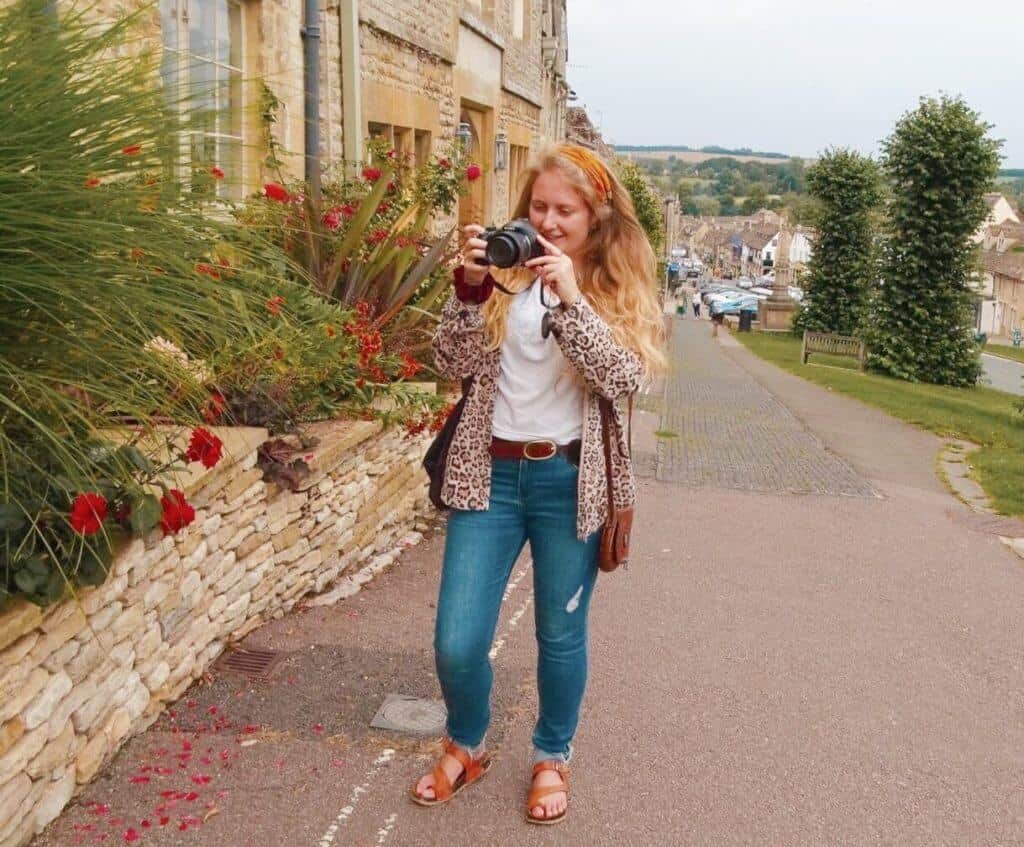
How to make money as a travel blogger
I wouldn’t advise starting a travel blog for the money because honestly, it can take time and starts slow. But as you build over time, you can start building your blog income streams and even replace your full-time job.
Some ways to monetise require a certain number of readers and you’ll need to wait to do, while others can start right away.
So, how do travel bloggers make money?
Advertising
There are a few companies that will place adverts on your travel blog and pay you based on the number of times they’re viewed. There are two companies called AdSense and Ezoic which require lower numbers of readers and don’t pay as well.
I held out for Mediavine, the best agency to make money as a travel blogger. The old threshold to apply was 25,000 monthly views but this has recently been increased to 50,000. I make $15-25 per 1,000 page views.
Affiliates
This is where a blogger promotes a product or service and if a reader makes a purchase, the travel blogger receives a commission for referring them. Some of the most popular affiliates for travel bloggers include Booking.com, Amazon Associates and Get Your Guide tours.
You’d be surprised how many companies offer an affiliate programme. There have been times I’ve been promoting a company just because I like them and think my readers will find them useful, then discovered they have an affiliate programme I could have been benefiting from.
Applying and keeping track of them all separately is a lot of effort and admin so I use Travelpayouts to create links to all of them and manage everything in one place! Signing up is free and takes 2 minutes.
The good thing about affiliate marketing is that you don’t need a certain audience to begin. You can start using affiliate links to make money as soon as you start your travel blog.
Important note – you need an affiliate disclosure so you can comply with guidelines and be transparent with your readers. If you need help writing this, just look at mine at the top of this page. Amazon requires you to mention them by name but most other affiliates do not.
Sponsored content and work with brands
This is one of the best ways to make money as a travel blogger. Once you have an established blog and audience, you can work with brands who might want to promote their products.
This can be anything from a meal in a restaurant to a sponsored tour, hotel stay or travel-related product. They may offer the product or experience for free in exchange for coverage or they may also pay you. Either way, this is an advert and you should disclose it appropriately.
To pitch brands as a travel blogger, tell them what you can offer in exchange for what you want, for example ‘one Instagram post to 12k followers and one blog post on a website of 200k monthly readers in exchange for this tour’.
It’s always a plus if you can be specific about the type of content you’d make and any creative ideas or angles you have in mind. When reaching out to brands, you’ll want to send them a media kit showing your demographics and stats. These can be made easily on Canva.
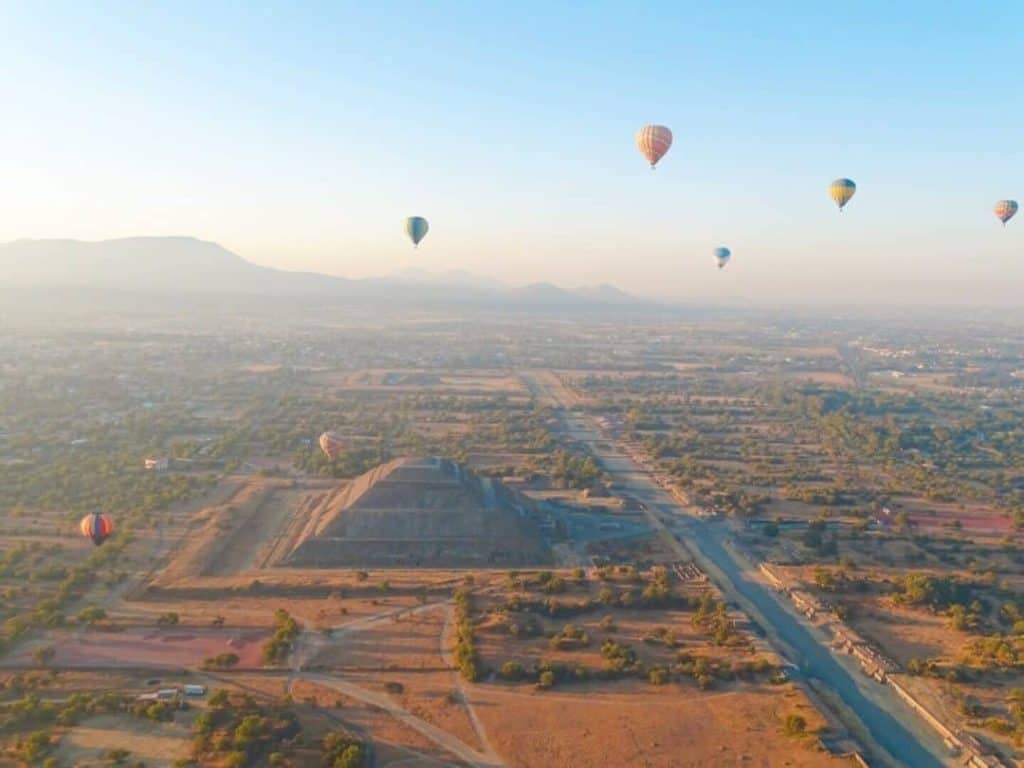
How to start a travel blog when you’re not travelling
When I got back from Africa in 2017, I spent a year living at home, working full-time, saving money to go remote and building my blog. My biggest struggle was finding things to blog about when I wasn’t actually travelling.
Whether it’s down to money, limited holiday days or family commitments, there are a billion reasons why you may not be travelling regularly but still want to start your travel blog. Tips for this include:
Blog about your hometown
I created so many Oxford blogs from 2017-18, even ones about the cafes I’d visit on the way to work and the food markets I’d get my lunch from.
Your home city may not seem exciting to you but if travellers go there, it’s got potential. Even if it doesn’t receive international tourists, I’ll bet people stay over for work or the locals look up new places to eat and drink.
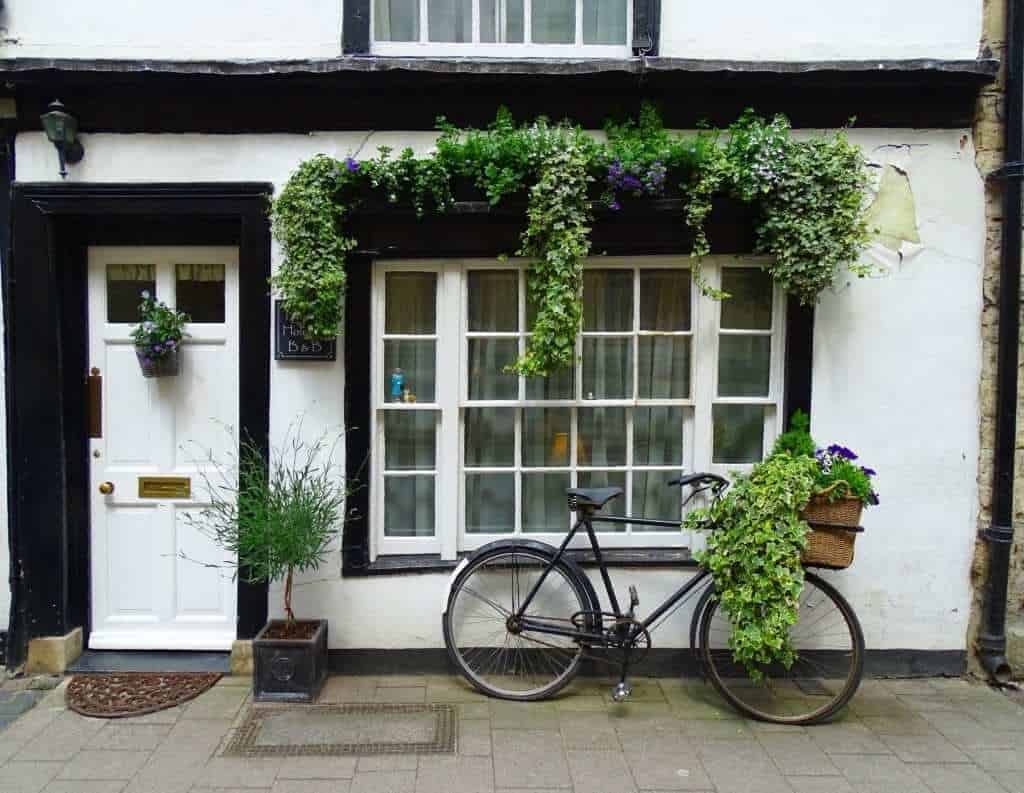
Day trips and weekend breaks
If your hometown doesn’t have potential, how far are you from a city that does? If you’re in the UK, it can’t be that far away. I find people are most likely to search for 1-2 day itineraries since you need to be more organised if you have limited time in a place.
So if you have just one day somewhere, use that to your advantage and put together a one-day itinerary rather than a huge guide to everything to see and do.
Interview posts
Not travelling right now? Interview people who are. I was interviewed early on in a series about travel bloggers juggling full-time jobs. More recently, I’ve been interviewed as a digital nomad. People love to be asked for interviews as it brings them new readers.
Reach out to bloggers you find inspiring and ask them if they’d link to do an interview-style post for your new travel website. I bet they’ll say yes. Check out my interview archives with other inspiring travellers!
Blog about specific attractions
When creating a travel blog, it’s best to be as specific and detailed as possible. So if you have limited time in a place or you’re in your hometown, rather than provide a vague overview to everything in a ‘Canada travel guide’ style post, why not pick one or two main attractions?
Ideas include a specific walking trail, a restaurant review, a waterfall, a food market… Anything! Two of my highest-ranking posts are about a specific coastal walk in Sydney and a stately house near me at home.
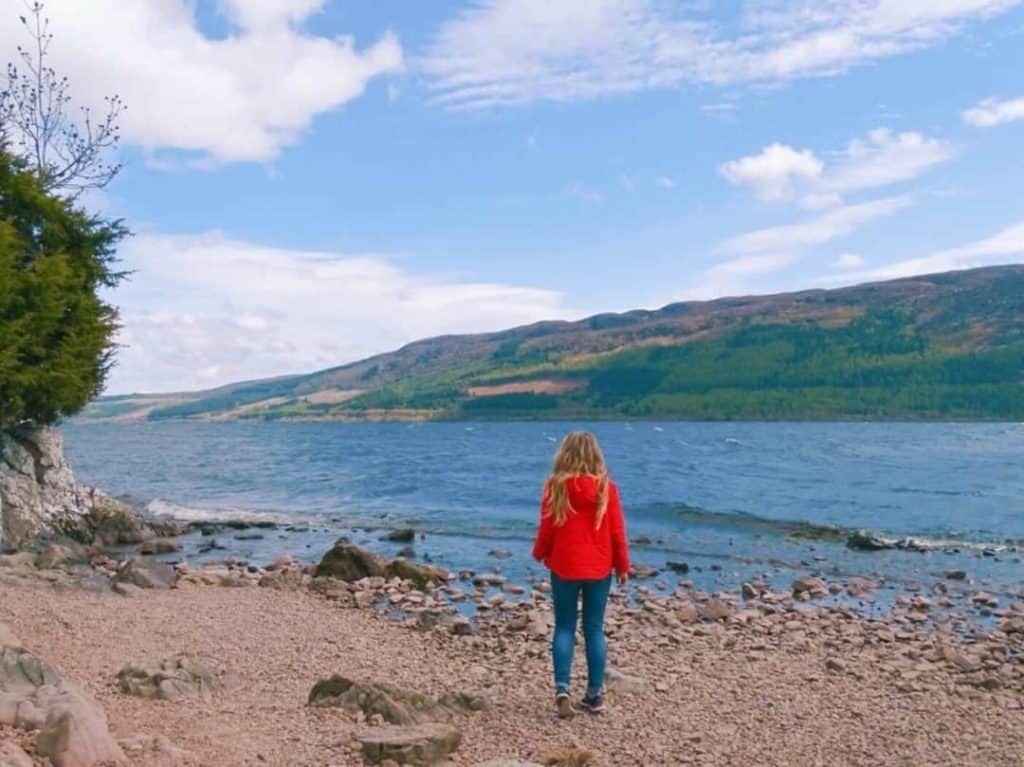
Responsibility of becoming a travel blogger
When becoming a travel blogger, you may not have much knowledge about issues in the travel community or the power you hold as someone with an internet following. But as travel bloggers, we have a responsibility to leave places and communities as we found them and not do any damage while travelling or showcasing places or people.
Educate yourself on White Saviorism. Don’t promote voluntourism. Don’t pose with children from developing countries for mindless Instagram photos. If you’re starting a travel blog, know it’s not all about websites and SEO; it’s also about responsibility and representation. You have power in the way you shape situations and conservations. Be wise!
Make sure to follow @nowhitesaviors for important considerations and @barbiesavior for a satirical take on how not to start a travel blog.
How to start a travel blog questions and tips
Question – when should I launch my travel blog?
From a practical perspective, I would wait until you have an About Me page and at least two articles to launch.
From a confidence perspective, whenever you are ready to take a leap! I was nervous about publishing my first blogs even though I had prior writing experience, and I know I’m not the only one. Followers have told me ‘what if no one reads it? What if people don’t like it?’
Try not to stress too much, although I know it’s easier said than done. Countless times I’ve published a personal post then anxiously spent the next hour editing it to sound less opinionated and reduce the risk of offending anyone.
Share your blog with a few friends or family members and asking for their feedback before launching on social media. You could also consider sharing your first few blog posts with Close Friends on Instagram until you’re feeling more confident.
If no one reads your blog at first, don’t stress. As you start using Pinterest and getting readers from Google, you will attract your ideal audience.
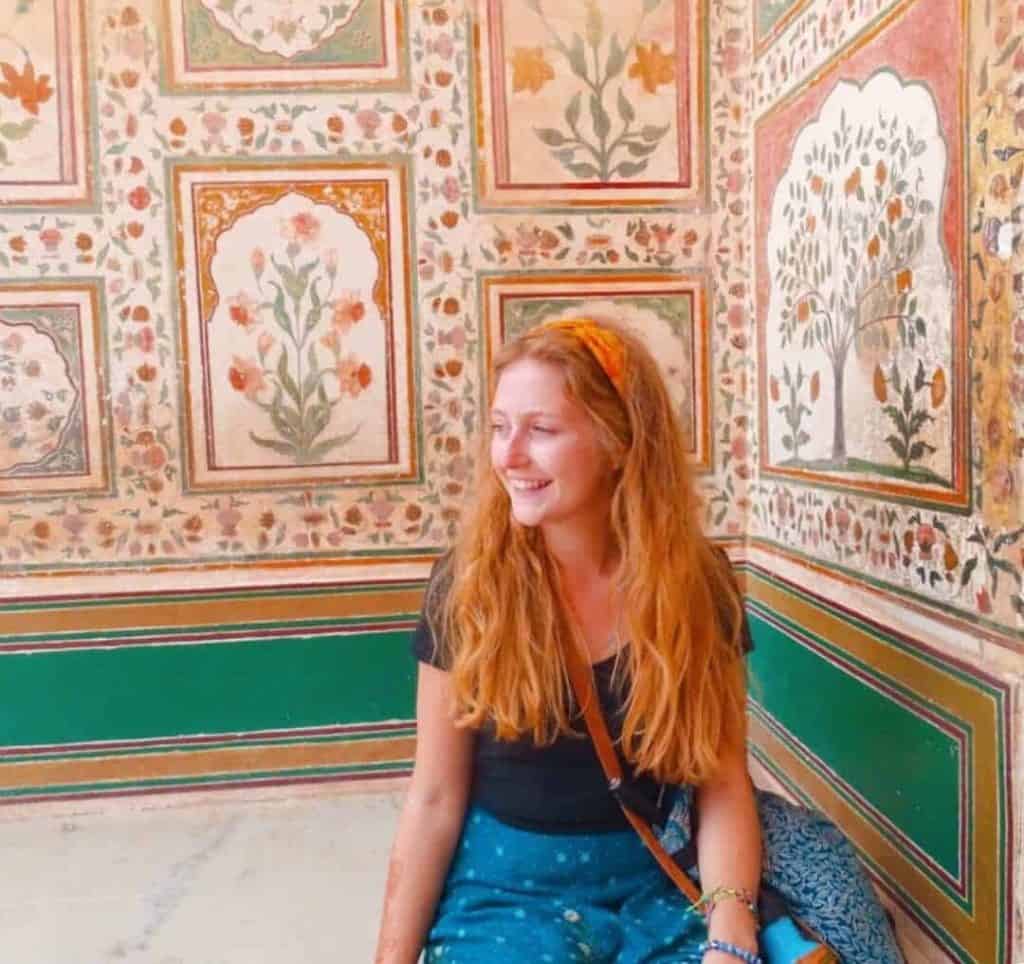
Question – how do you deal with criticism?
A website is a relatively safe place to be in terms of internet hate. I think I had a comment on a blog once saying something I’d said was inaccurate and I took it as a learning curve to fact-check better in future. If people are going to be mean, it will be on social media.
How to deal with trolls: In the very unlikely event you get someone heckling or being horrible to you, ignore and block, my friends.
What if people think your work is bad? They won’t. We all have self-doubt and imposter syndrome so it’s normal to feel this way. Start by posting what you’re best at, whether that’s a photography blog if you take nice photos or an opinion piece if writing is your main skill. For example, I never posted any graphics to start as I know design isn’t my strongest suit.
What if you deserved the criticism? It’s easy to feel defensive and reply rashly if someone critiques you for something you’ve said or done. If what they’ve said is unnecessary or unfounded, ignore them.
Take an hour to mull it over. Ask yourself, do they have a point? Perhaps you’ve phrased something badly or posted an opinion without thinking it through. Apologise and learn from it. There’s nothing wrong with seeing another person’s point of view and changing yours.
If you have no experience posting to an audience, it takes time to get used to it. Observe how bloggers you admire present facts and opinions and how people respond to them.
Question – should you build a website or social media following first?
There’s no right answer. I launched my website first but in retrospect, I like the idea of finding your groove, travel style and photography style via Instagram and then building your website later. This also means you’ll start with a bit of website traffic when you promote on Instagram.
There’s no right or wrong way. However my one warning would be…
Tip – invest in your website above your social media channels
Any wise owl blogger will tell you this. Your website is your baby. You own it. Your Instagram account is a page on a shared social media channel that you don’t own. Your account could randomly be marked as spam at any point, or users could migrate to a new channel.
In five years’ time, your readers may be visiting a new social media channel rather than Instagram, but they’ll still be visiting websites.
Tip – you don’t have to start it all at once
Are you even a blogger if you don’t have a YouTube, podcast, clothing line and branded t-shirts?
Well, yes. Don’t go overboard and spread yourself too thinly. Most bloggers have a website and one or two key channels, perhaps Instagram or Youtube that they invest in heavily.
Obviously, it’s nice to have a solid following across your channels but don’t stress if you build up slowly and if you never have a tote bag with your face on it.
Question – how can I connect with other bloggers?
It feels amazing to connect with people who do what you do and share the same hobbies and passions, plus you can learn a lot from other bloggers.
Unfortunately, all too often Instagram is a place for influencers to show off their seemingly perfect lives. But lovely individuals are out there when you look; I’ve made many blogger friends through Instagram.
How to find travel bloggers on Instagram – use hashtags like #travelblogger and the related ones suggested along the top bar when you search. Check out if there are any blogging groups in your area. I recently found out there’s an Oxfordshire Blogger Network that I never knew about when starting my blog here a few years back.
But IG is more about building friendships than brainstorm blogging strategy. That’s where Facebook groups come in handy. There are groups depending on your niche, for example female blogging groups and ones aimed at SEO or Pinterest strategy. The ones I would recommend include:
- Make Traffic Happen – SEO + Social Media Support – best for SEO tips
- Female Travel Bloggers – best for community
- Pinterest Travel Bloggers Club – best for building Pinterest traffic
- Link Building + Guest Posts + Collabs (Travel Bloggers) – best for gathering backlinks to your site
- Blogging for New Bloggers – best for beginner blogging questions
- WPBeginner Engage – WordPress Help for Non-Techies – best for tech and website help.
Usually, you’ll need to submit your website domain and answer some questions in order to join. Once you’ve started your travel blog, it’s worth joining as many blogging Facebook groups as possible. You can always leave certain ones later if you find they don’t serve you.
Final note from Rose
I’ve just given you 8,652 words of advice but I just want to give you two much more important ones:
ENJOY. THIS.
If you go into this promising yourself to post 11 times a week, share to every social channel twice a day, hit the Mediavine threshold by the end of the year… Well, this is going to be awful.
Blogging is so much fun: you get to share your opinions, be the sole creative and make like-minded friends. It would be a shame to stress yourself out and end up hating your blog and feeling disappointed if you don’t get instant success. You’ll burn yourself out.
I say it because I’ve been there. I often find myself thinking ‘I need to publish this by the end of the week’ when usually I really don’t.
Most of all, aim to enjoy blogging and play with your voice and creativity. I didn’t even think about SEO or analytics until two years in and yes, maybe that was a mistake. But maybe it wasn’t because I still love what I do.
This is loooong. See you next time!
Free printable checklist
Don’t leave without your freebie. Download your ‘how to start a travel blog’ checklist’ here (it will open in Google Drive).
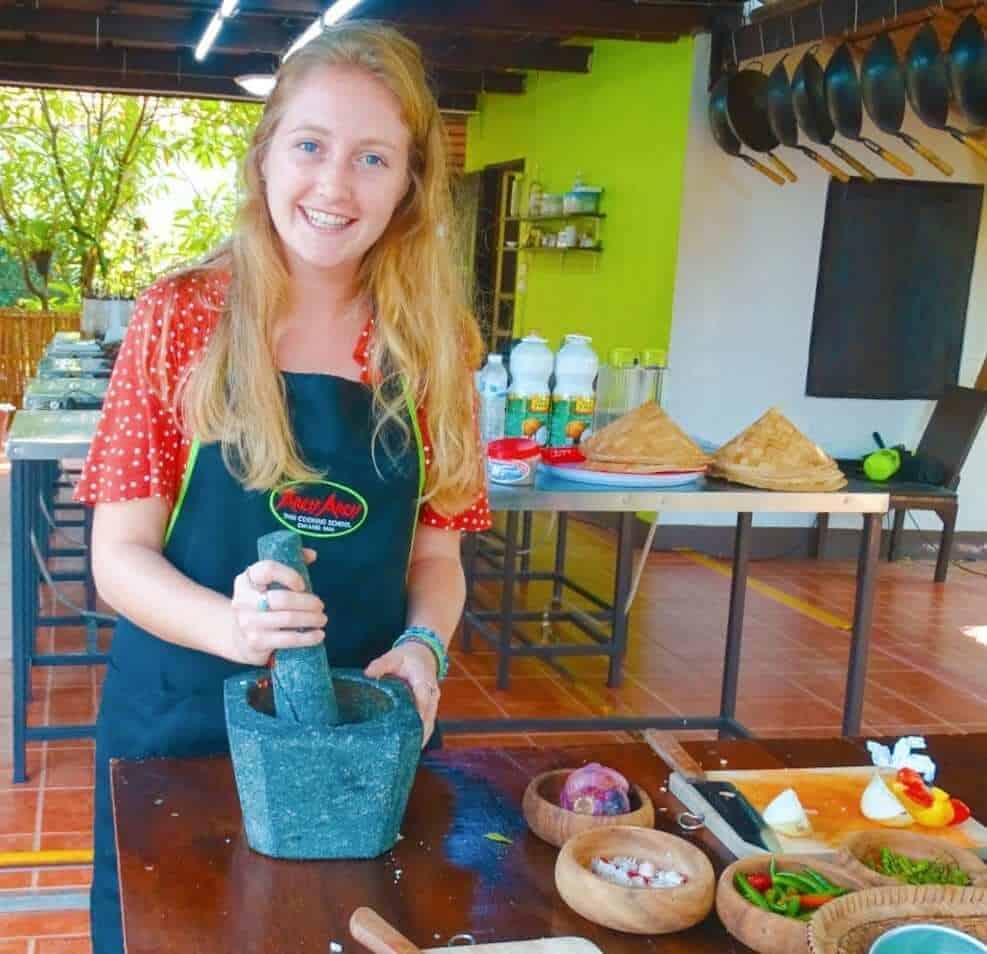
Follow for more blogging content on Instagram, Facebook, Twitter and YouTube.
I hope you have a better idea of how to start a travel blog! Drop any questions or comments below.
Check out my other blogging guides:

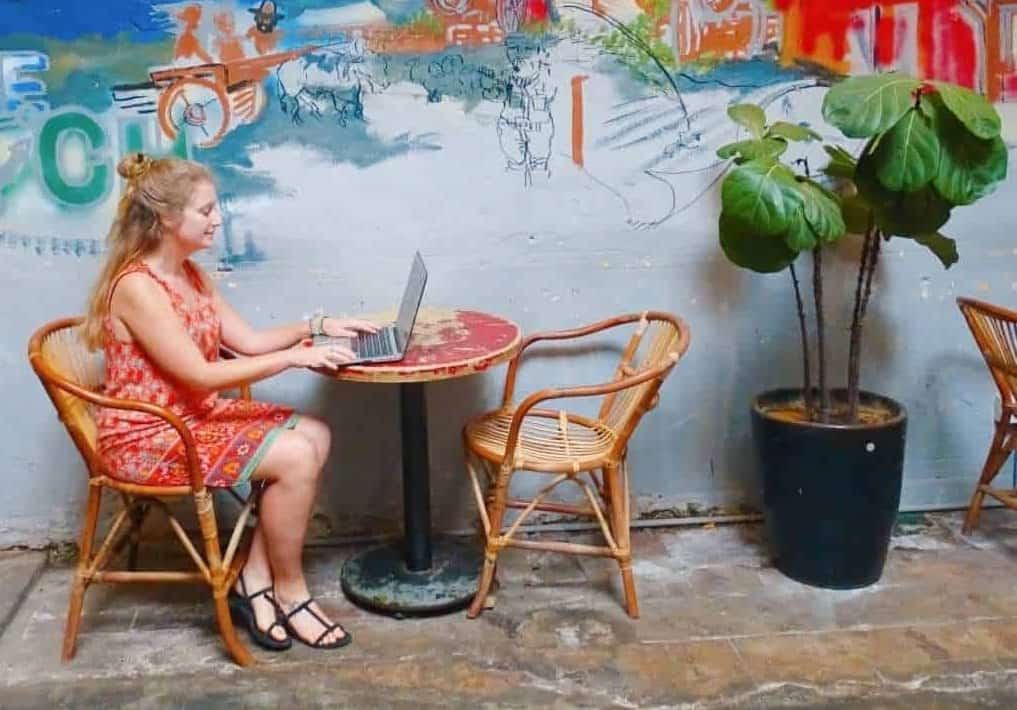
Thank you for taking the time to produce this post. It is great and you make it so easy to understand.
Do you find there’s a best time or day to post?
I find weekends are the best time to post purely because people have more time to read blogs and they get views straight away which is always a good start! I don’t worry too much about the time of day for the actual blog post but I would aim to promote it around the best times of day for the different social media channels I use ? hope that helps!
We loved this post so much! We have just started up our instagram (@skintyorkshiretravellers) and are in the process of sorting a blog. At the moment we’re just on the free wordpress.com but debating whether to go self-hosted this early on. We’re very much still in the early stages so these tips were so useful 🙂 Thanks!
Hannah + Andy | http://www.skintyorkshiretravellers.wordpress.com
xx
Glad you liked it, guys! Yeah it’s not a bad idea to be on a version while you play around and find your groove. Although I sometimes find once you pay for something, you feel more motivated to use it!
Wow great piece of information over there, the way you have used graphs and charts made it so easy to understand the content more clearly.
Keep up the good work
Glad you found it useful, Arpita 🙂
“Welcome to Hell”
Hahahah!!!! So, so, so accurate. I’m JUST getting my blog started and absolutely agonised over this. (As we all do)
But what a relief when I got through that hump.. and onto the next massive mountain of making the website and content. It’s a never ending battle… but very very exciting and enjoyable. I appreciate the wonderful solo travel blogging women for creating these very helpful guides. Hopefully one day, I will do the same!
Hey Kay! Ah haha it’s so true 😉 and truly, it is so much work that people don’t realise! But incredibly enjoyable like you say. Good luck with it all!
Hahahah!!!! So, so, so accurate. I’m JUST getting my blog started and absolutely agonised over this. (As we all do) but Thanks learned and know a lot for sharing everything. Its helps a lot. Thank you very much.
Hi Satta, glad you found it useful!